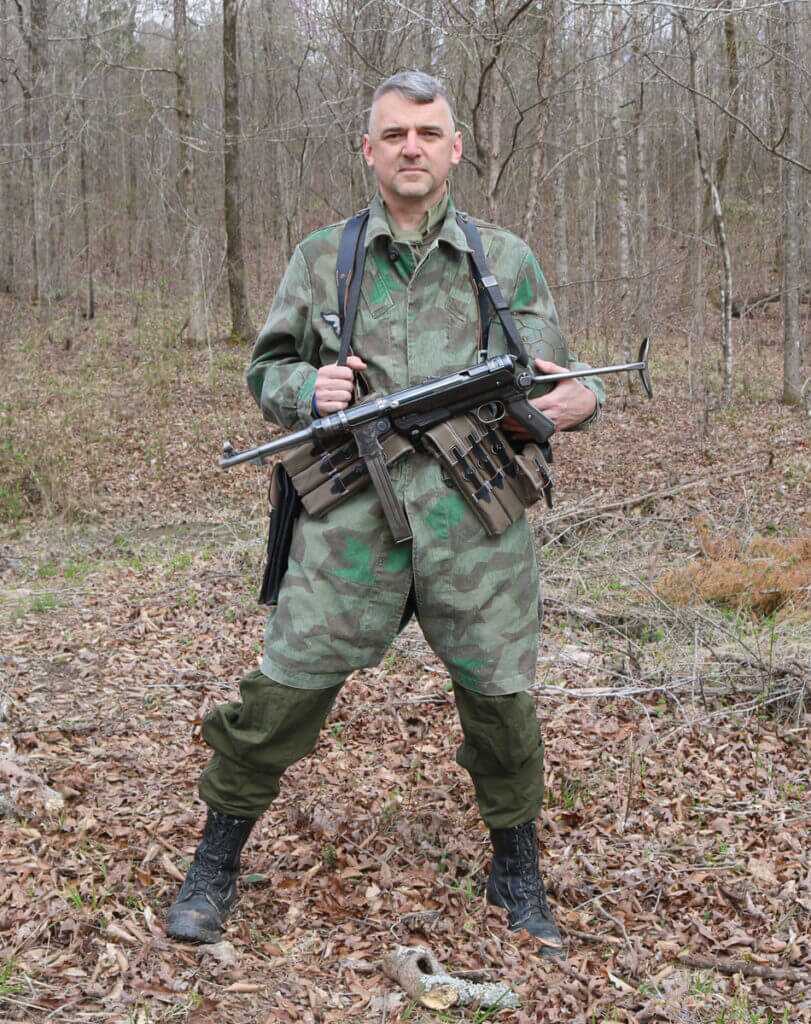
At 0500 on the morning of May 10, 1940, Hauptmann Karl-Lothar Schulz stood shivering in the door of a Luftwaffe Ju-52 tri-motor transport as it droned toward the Dutch Vliegveld Waalhaven airfield in Rotterdam. The young Hauptmann’s mind tried unsuccessfully to assimilate an overwhelming amount of information. In addition to the pending combat parachute jump, assembly in the drop zone under fire, actions on the objective, and the inevitable fear of a violent gory death, he also carried an inordinate personal share of the burden for the success of Fall Gelb, the overarching German invasion of the Low Countries.
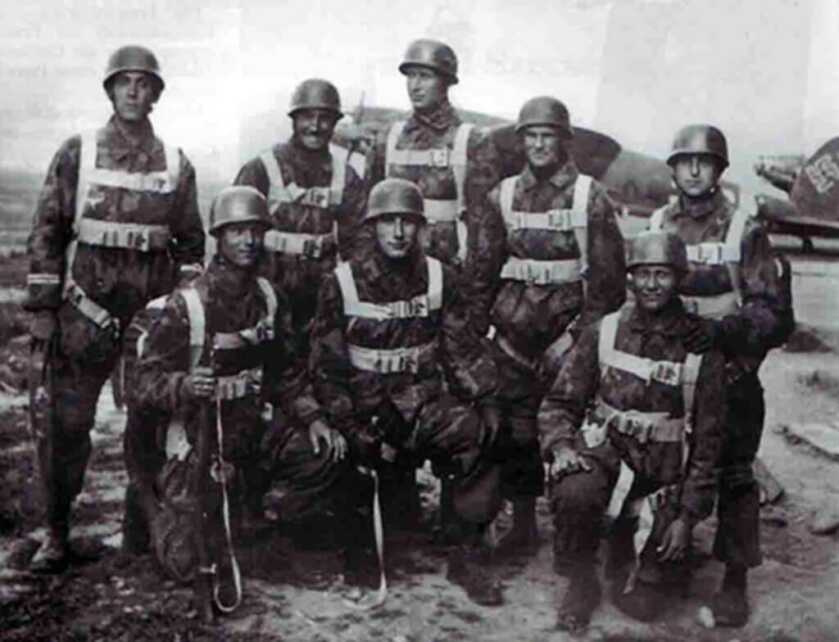
Schulz’s III./FJR 1 Battalion was hand-selected and exquisitely well-trained. The evening prior his Regimental commander, Oberst Brauer, had confided, “Schulz, your mission is the most important of the entire regiment. You have to take Waalhaven so that the air-landed forces of the 22. Infanterie-Division can follow.” It was a lot for a young man to process, even one as hardcore as this young German Captain of paratroops.
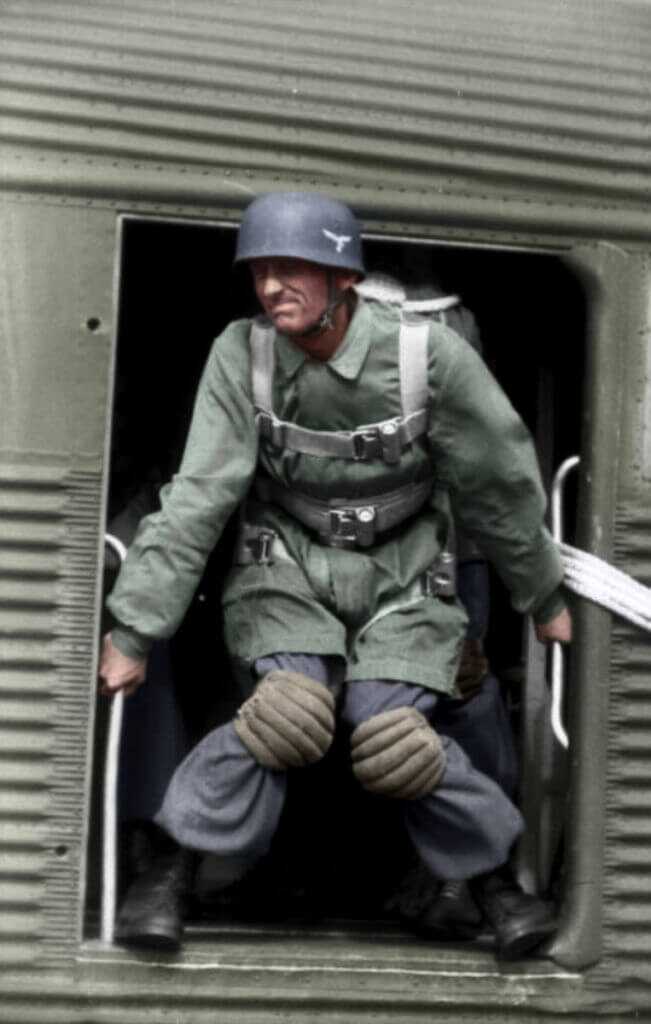
Faster than he had expected the pilot of his Auntie Ju dropped down to around 200 meters and made his final turn toward the airfield. Schulz and his newly-minted Fallschirmjagers had the element of surprise and he rode the lead machine, so the copious Dutch antiaircraft emplacements remained silent. The jump horn sounded, and Schulz dove headfirst out into the grey morning sky.
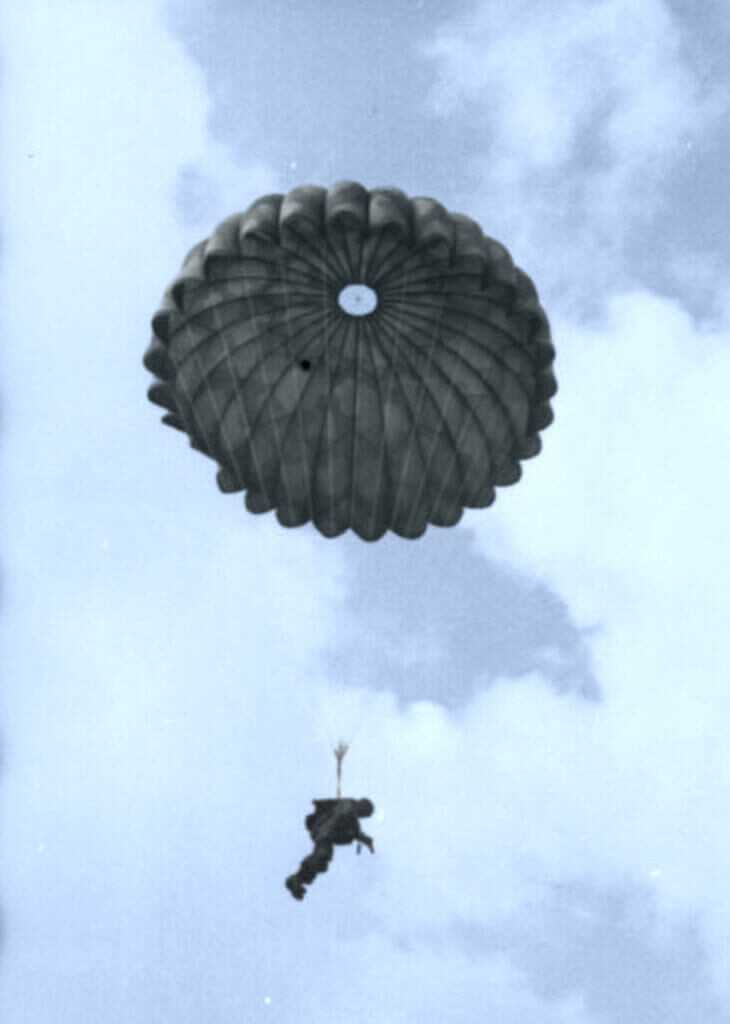
His parachute attached at a single point behind his neck, so Schulz was helpless as he floated some 90 meters to the earth below. The eccentricities of his chute design typically required about eighty seconds of standing upright to get clear of the cumbersome thing after landing. It also oriented the trooper forward and necessitated knee and elbow pads to help mitigate injury.
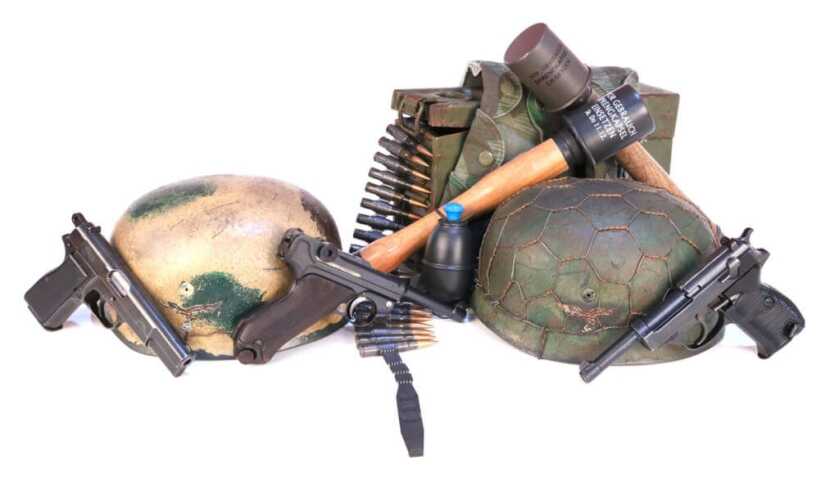
The prime detriment, however, was that Germany’s early sky troopers typically had to jump essentially unarmed with only a handgun and gravity knife. Small arms, support weapons, ammunition, and demolitions were simultaneously dropped from underneath the Ju-52 in a specially-designed canister called a Fallschirmbombe. The difficulty getting clear of the chute after landing combined with the inevitable rigors of retrieving a weapons canister on a chaotic drop zone made these early German airborne operations particularly hazardous. Hauptmann Schulz had all this and more on his mind as he slammed into the packed Dutch soil of Waalhaven airfield.
Young Men Go To War
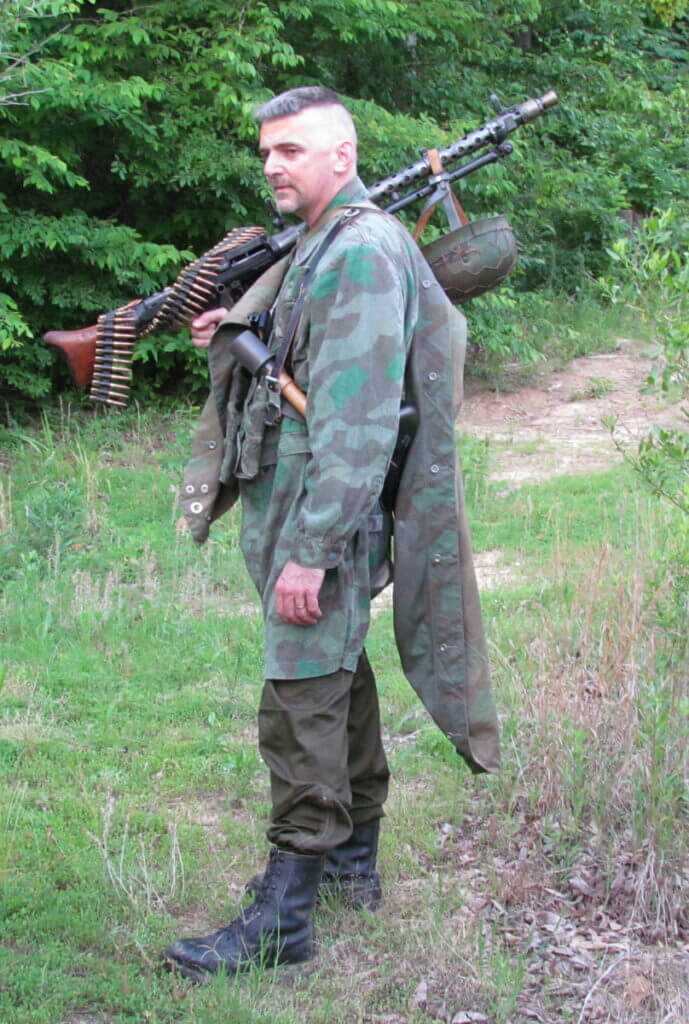
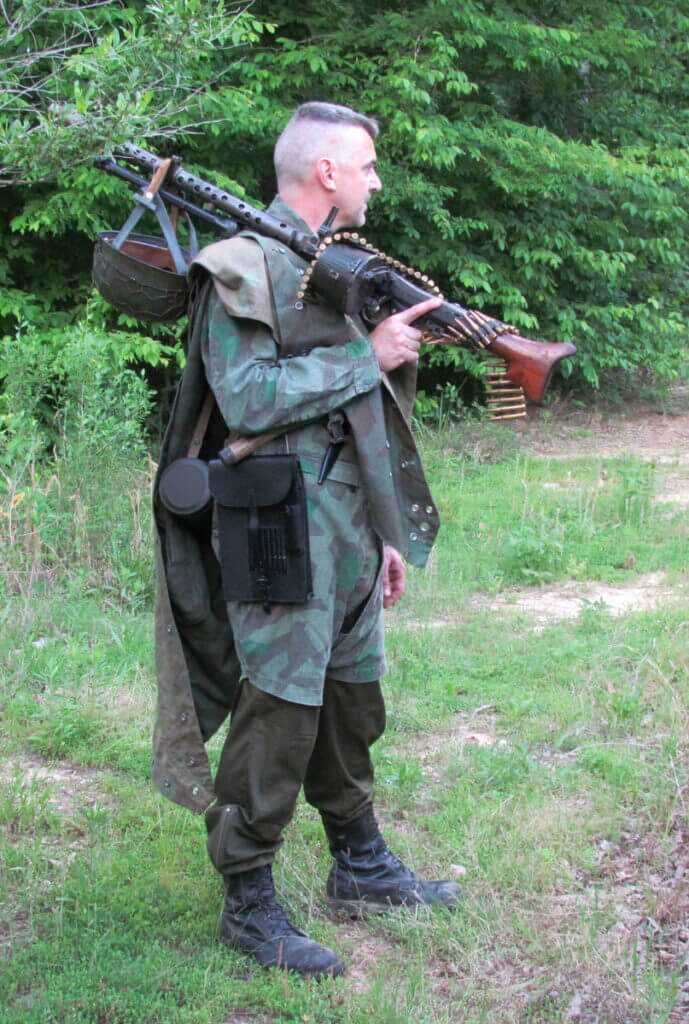
Schulz raised his flare gun skyward and launched a prearranged signal. The hissing flare brought his men like moths to a flame. The first German soldier to join him was Leutnant Schuller along with his machinegun detachment. By now the Dutch defenses were fully alerted. Tracer fire crisscrossed the airfield grounds, and larger caliber antiaircraft fire licked hungrily up toward the following Junkers transports, connecting with several in a brilliant display of pyrotechnics.
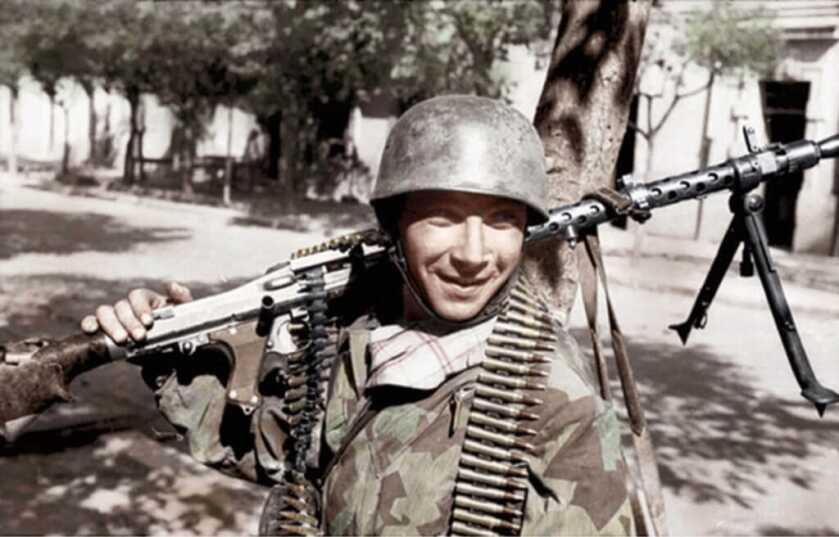
Schuller laid his MG34 team out to help secure the landing area as the rest of the German troops rallied around Schulz. Suddenly from across the wide expanse of the airfield, a trio of military trucks came roaring up brimming with Dutch Marines. Without waiting for orders the German machinegunner settled in behind his heavy belt-fed machinegun, drew a bead on the lead vehicle, and squeezed the bottom portion of the gun’s heavy trigger.
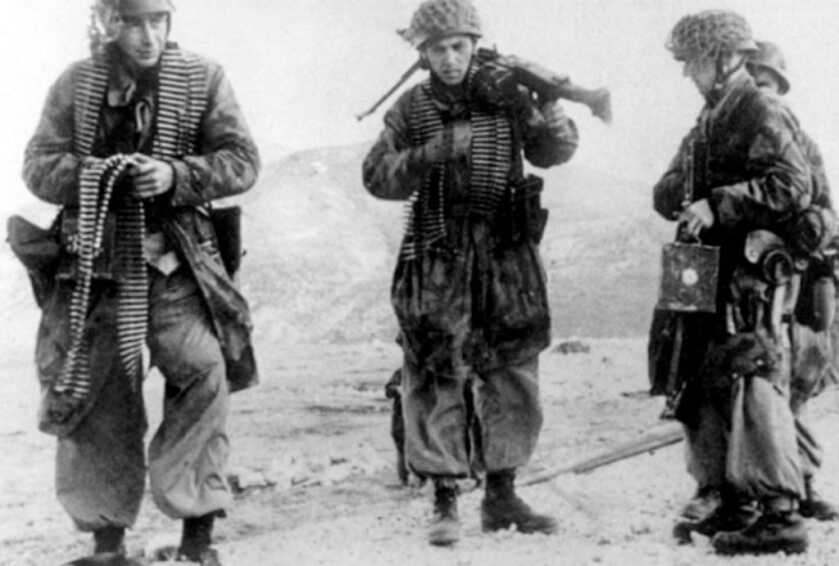
The MG34 exploded firing heavy 7.92mm rounds at a cyclic rate of 900 rounds per minute. The assistant gunner kept belted rounds feeding smoothly in from the left. The long burst of fire connected with the grill of the lead truck and chewed it to pieces. The dead driver fell against the wheel, and the heavy truck slewed to the side before rolling over and settling on its roof. The other two trucks slid to a halt, and their cargo of Dutch Marines piled out under withering German fire.
A Cool Head Under Fire
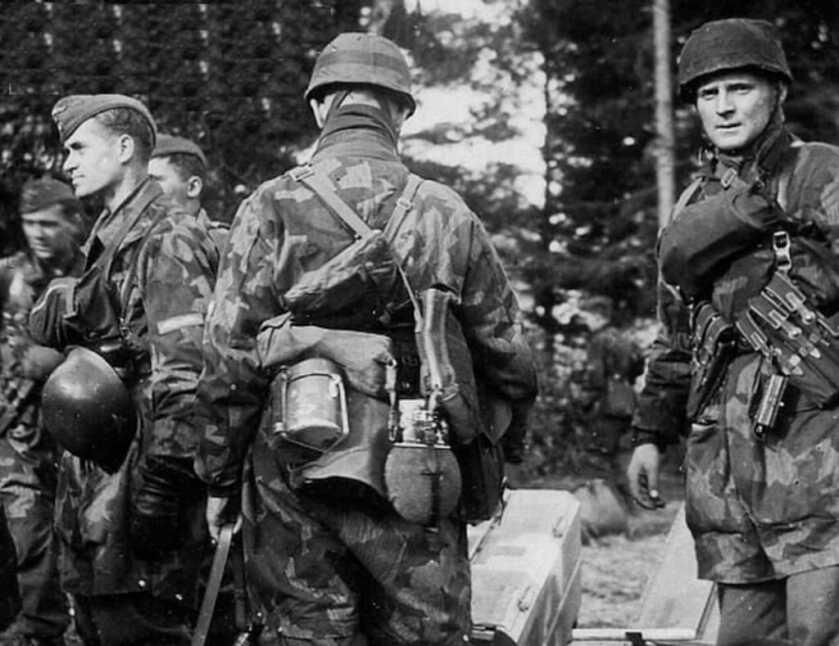
Schulz assigned his subordinate commander’s specific objectives as they reported in, primarily the airfield’s many antiaircraft emplacements. If they couldn’t get these fast-firing guns neutralized the follow-on Ju-52’s would fly into a meat grinder. Once he had issued his orders Hauptmann Schulz grabbed Leutnant Schuller and his machinegun team along with a few other Fallschirmjagers and climbed into the two remaining Dutch trucks. Racing to the airfield administration buildings under fire, Schulz and his men deployed in a nearby drainage ditch.
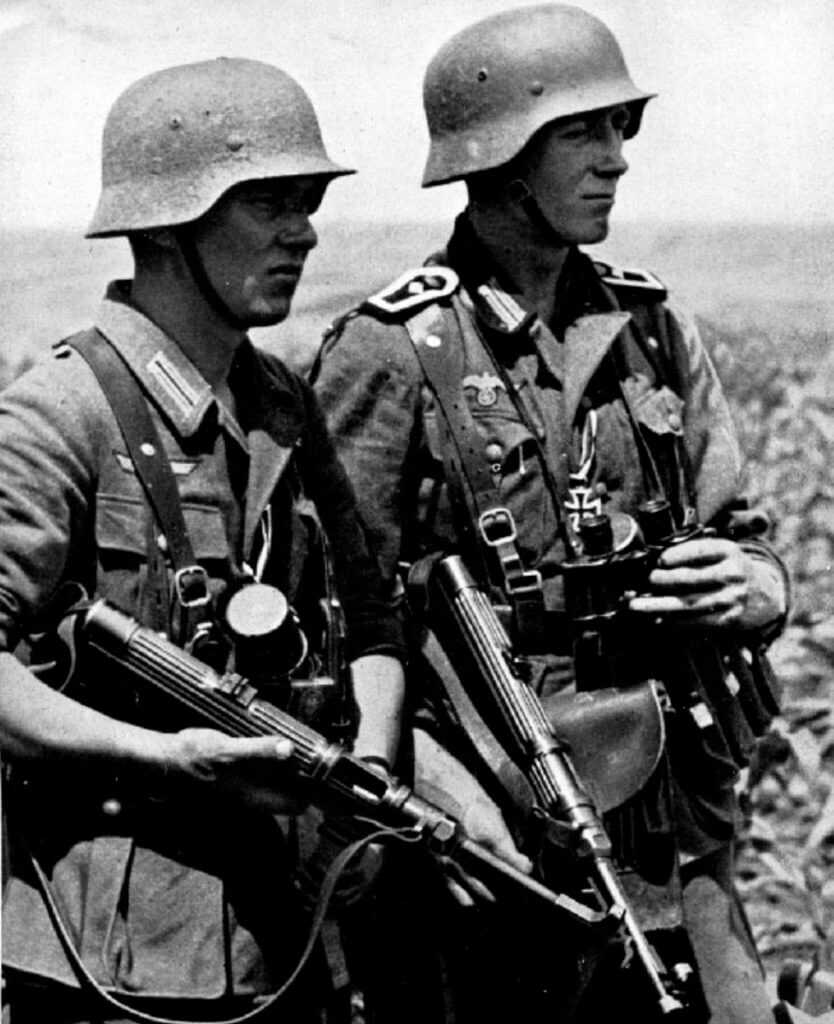
Shielded from the Dutch defensive fire the German combat team advanced undercover to the building complex and breached the main doors. Schulz led the way with his fellow troopers, most of them wielding MP38 submachine guns. The MG34 team followed close behind to offer heavy fire support as needed. In minutes the admin buildings were taken and the shocked Dutch commander made prisoner.
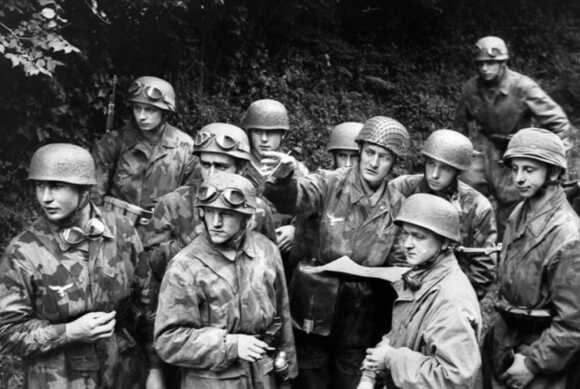
There followed a fierce air battle between Allied Hurricanes and German Bf109 fighters that resulted in losses on both sides. Two Ju-52 transports landed full of support troops as well as Schulz’s immediate commander, Oberstleutnant von Choltitz. As they were consolidating their position, a previously unknown antiaircraft gun opened up and destroyed the next two Junkers planes. The Fallschirmjagers neutralized the final AA position and secured the airfield for extensive follow on forces.
The World’s First General Purpose Machinegun

Hiram Stevens Maxim introduced the planet to the devastating capabilities of the belt-fed machinegun back in 1884. Maxim’s action drove both the German MG08 as well as the British Vickers gun throughout the hemoclysm that was the First World War. However, these water-cooled guns were heavy and relatively immobile. Taking lessons learned from the trenches, the Germans secretly crafted a revolutionary new belt-fed support weapon.
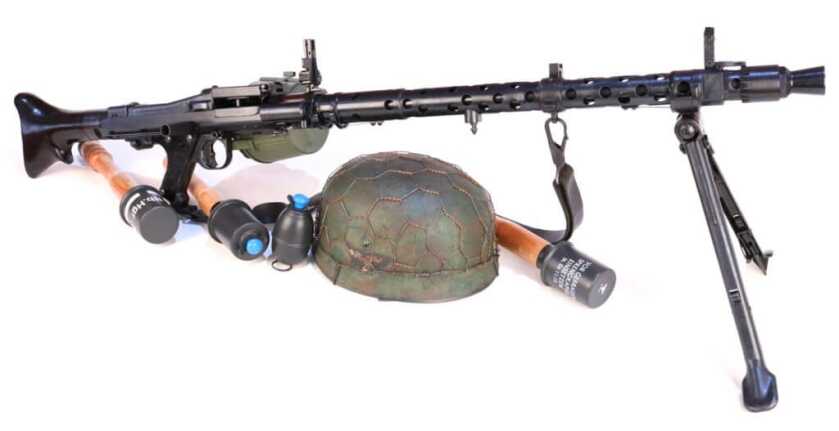

The German MG34 was a recoil-operated, open-bolt, belt-fed, air-cooled machinegun that locked via a rotating bolt and weighed 27 pounds unloaded. Featuring a quick change barrel and a fire selector built into the trigger, the MG34 was the world’s first belt-fed machinegun light enough to be serviced by one man in the assault. It was this remarkable mobility that ultimately fundamentally changed Infantry combat. Before the MG34 offensive Infantry operations orbited around the rifle. After the MG34 such stuff orbited around the machinegun.
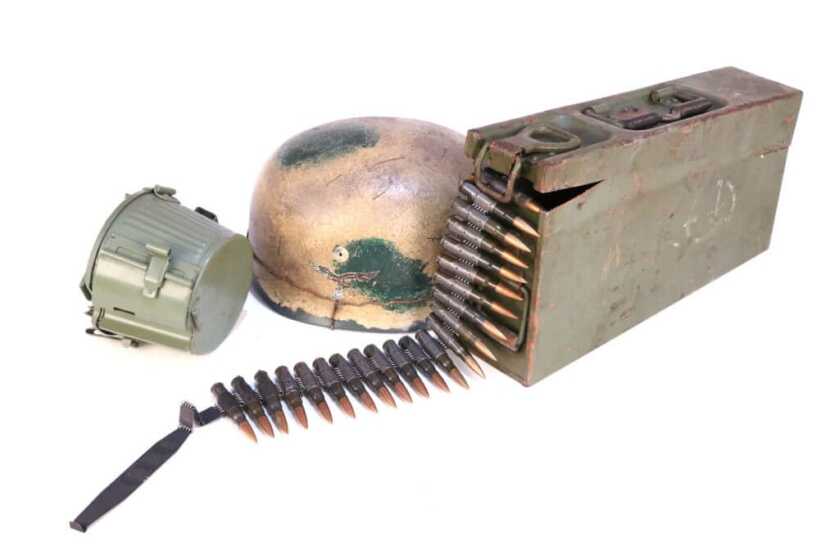
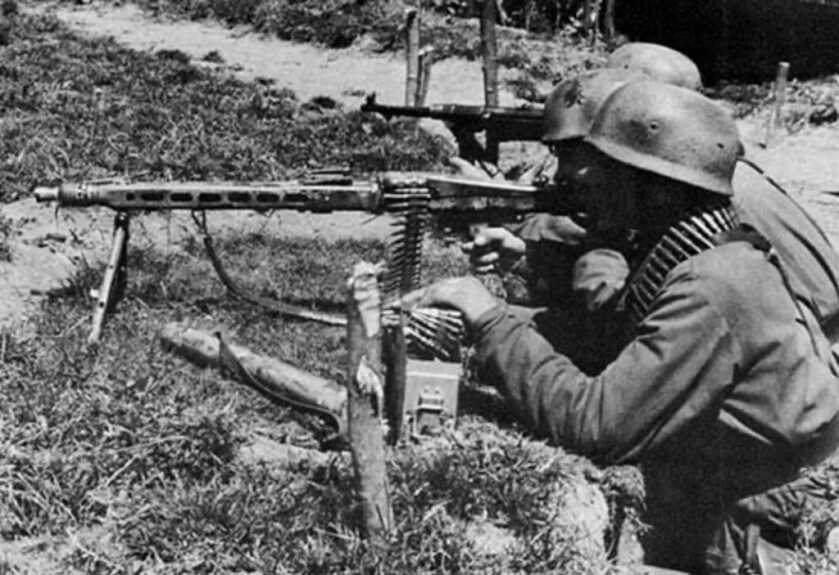
The MG34 was an expensive and relatively finicky design with meticulously machined parts and tight tolerances. The subsequent stamped steel MG42 was cheaper and more reliable. Both guns fed from 50-round drums or 250-round boxes.
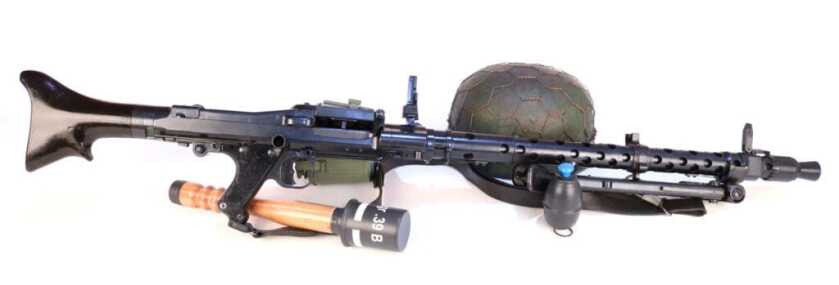
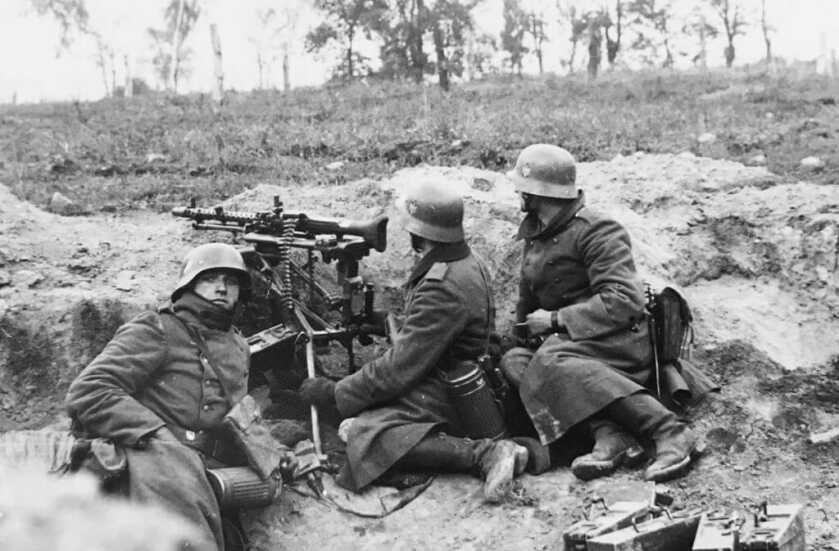
The MG34 could be fired off its integral bipod, on a complicated Lafette tripod, or even from the hip while on an assault. The Germans produced some 577,000 copies. The MG34 was used throughout WW2 on all fronts and was commonly encountered in Vietnam as well as the various perennial Middle Eastern conflicts.
Denouement

Airfield seizure is one of the primary missions of airborne forces today. The US Army Rangers are artists at it. Back in 1940, unproven troops using unproven tactics shook the world’s foundations with radical operations like the seizure of the Waalhaven Airfield. Modern armed conflict would never be the same.
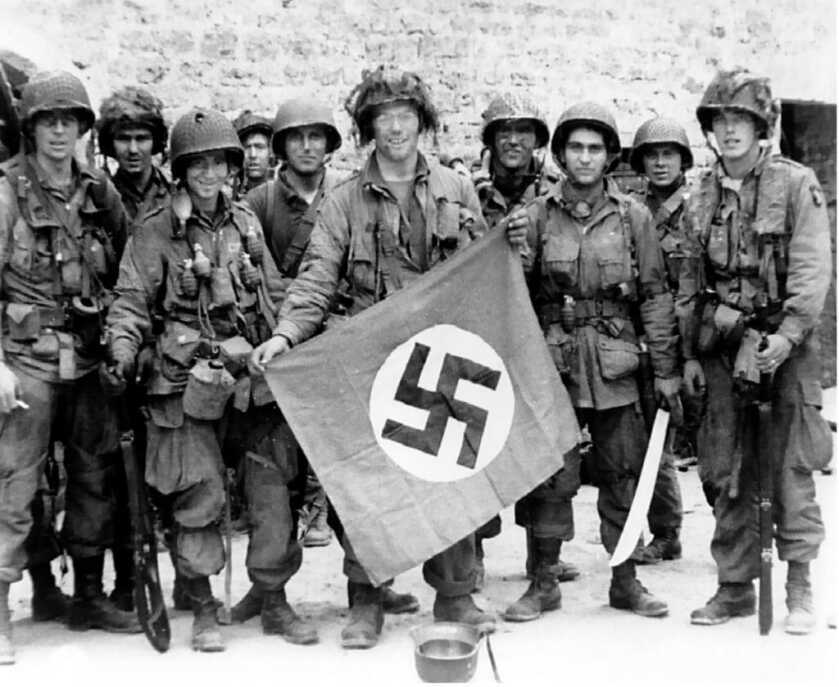
The German Fallschirmjagers played a critical role in Axis combat operations throughout World War 2. After the massive losses at Crete, the Germans never committed to another large-scale airborne operation, leaving the Fallschirmjagers to fight on all fronts as elite Infantry. The Allies, however, took these lessons to heart and made extensive use of Airborne forces, particularly during the invasion of Normandy, Operation Market Garden in Holland, and Operation Varsity, the airborne drop across the Rhine.
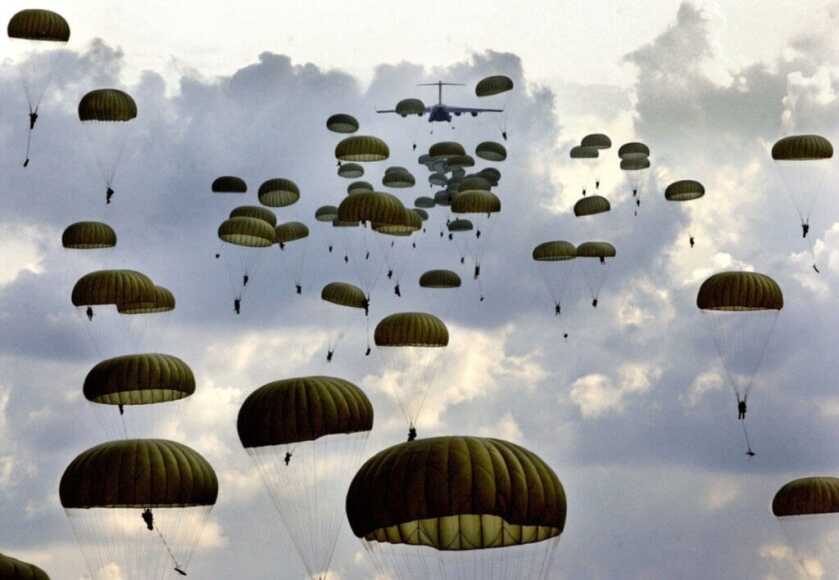
Airborne forces enjoy a well-earned esprit de corps. As a former Army paratrooper myself, I have had the thrill of leaping out of a perfectly good airplane into pitch darkness. Little compares.
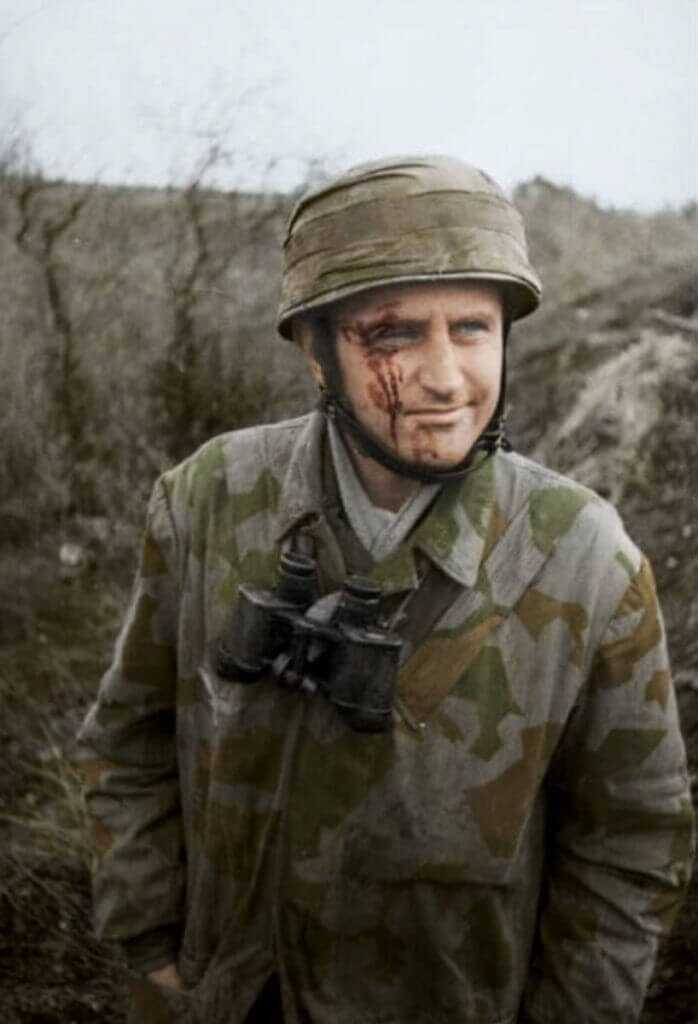
A captured Fallschirmjager in Greece was found to be carrying the Ten Commandments for the Airborne. Many of these dicta are timelessly applicable to elite forces even today.
You are the elite of the Wehrmacht. For you, combat shall be fulfillment. You shall seek it out and train yourself to stand any test.
- Cultivate true comradeship, for together with your comrades you will triumph or die.
- Be shy of speech and incorruptible. Men act, women chatter; chatter will bring you to the grave.
- Calm and caution, vigor and determination, valour and a fanatical offensive spirit will make you superior in attack.
- In facing the foe, ammunition is the most precious thing. He who shoots uselessly, merely to reassure himself, is a man without guts. He is a weakling and does not deserve the title of paratrooper.
- Never surrender. Your honour lies in Victory or Death.
- Only with good weapons can you have success. So look after them on the principle—First my weapons, then myself.
- You must grasp the full meaning of an operation so that, should your leader fall by the way, you can carry it out with coolness and caution.
- Fight chivalrously against an honest foe; armed irregulars deserve no quarter.
- Keep your eyes wide open. Tune yourself to the top most pitch. Be nimble as a greyhound, as tough as leather, as hard as Krupp steel and so you shall be the German warrior incarnate.
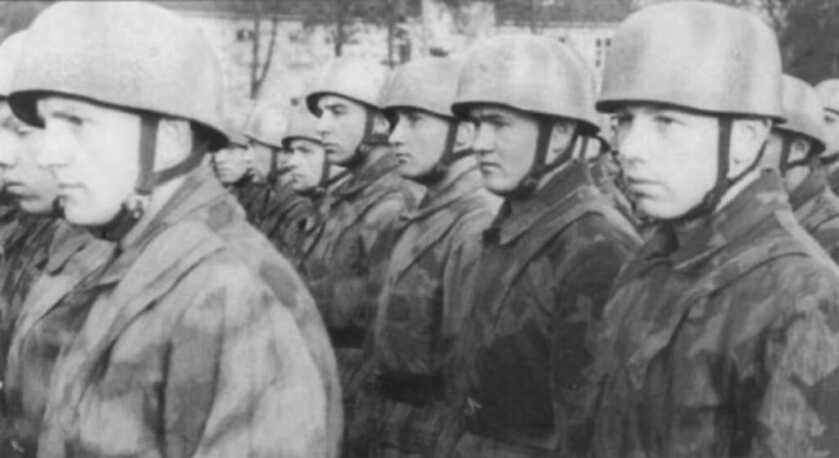

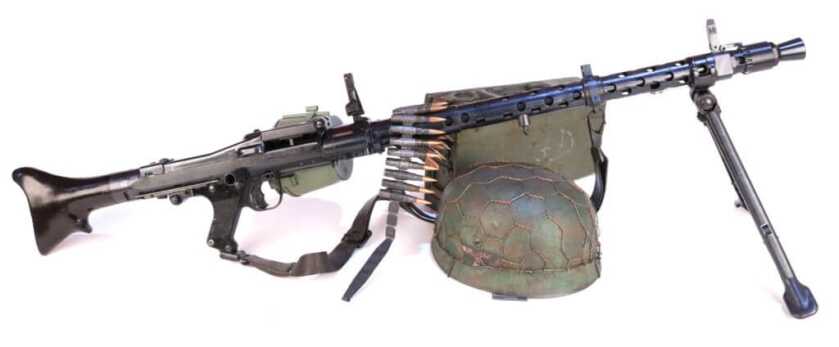
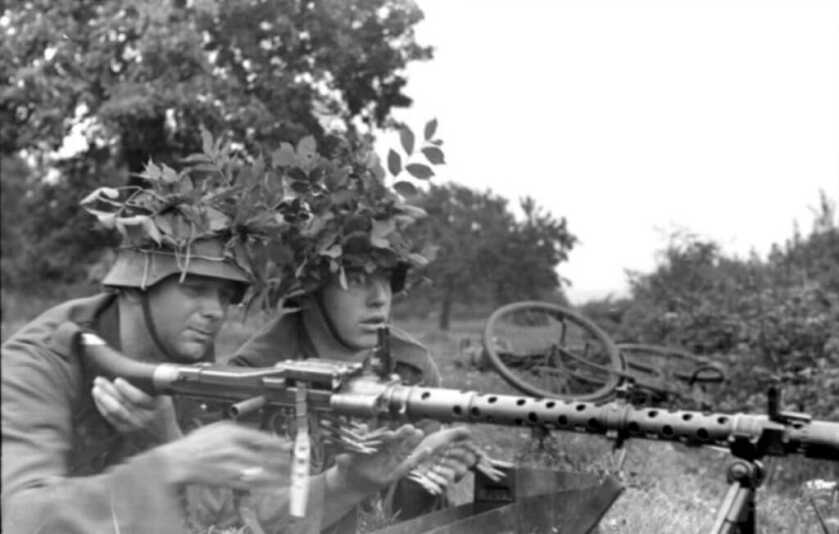
Inspiration for this project came from Jump into Hell by Franz Kurowski. Special thanks to www.worldwarsupply.com for the cool replica Fallschirmjager gear.


Just out of medical school and internship I had the privilege of serving as brigade surgeon for the 3rd brigade, 82nd Airborne for 3 years in the late 1970’s. Your article brought back the thrill of jumping out of a bumping C-130 in the dark!
Great article! I particularly enjoy your writing about WWII but all of your writings are enjoyable. Thank you!
I read some years ago that one of Hitler’s favorite generals was Kurt von Student. Student was commander of the Fallshurmjaegers in the invasion of Holland & was taken out by a snipers bullet. Hitler was furious and numerous atrocities were committed because of it. The invasion of Crete sealed the deal & Hitler disallowed their use in any further airborne ops. All The Way!
AATW! Well done.
What pictures?
Ten commandments? Does anyone else only see nine?
I only saw nine as well, I had to look it up. Apparently the first one was: “You are the elite of the Wehrmacht. For you, combat shall be fulfillment. You shall seek it out and train yourself to stand any test.” so all ten are actually there in the article.
Very nice article, always enjoy reading these from Will.
People keep saying that we jumped out of perfectly good airplanes. The truth is, we jumped out of AIR FORCE airplanes; built by the lowest bidder, maintained by high schoolers, and piloted by those of questionable sobriety. 😉
Good article! Keep up the good work.
I can tell you how much I enjoyed your article. The pictures were outstanding. It was very informative and a pleasure to read. I never knew they existed and how well trained they were.
You did good Will.